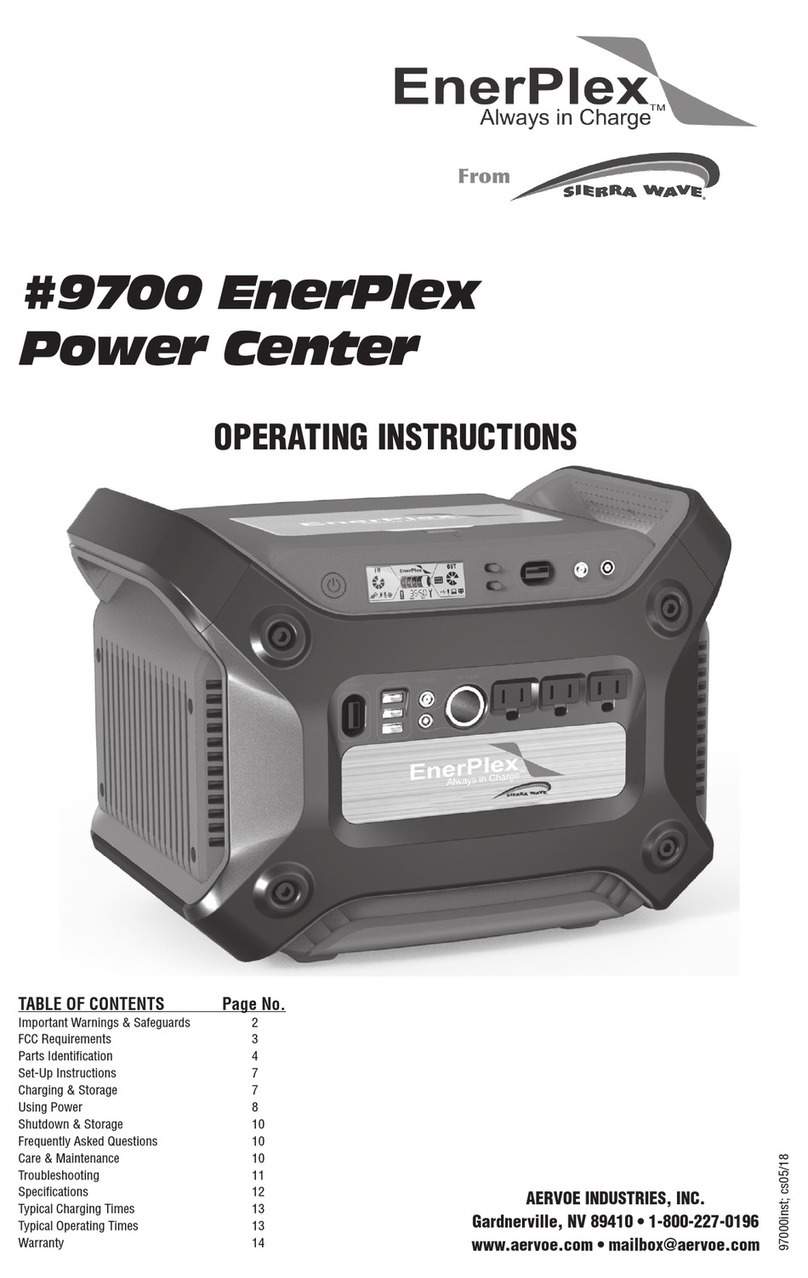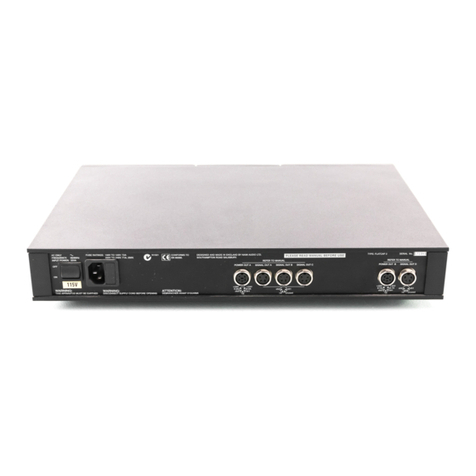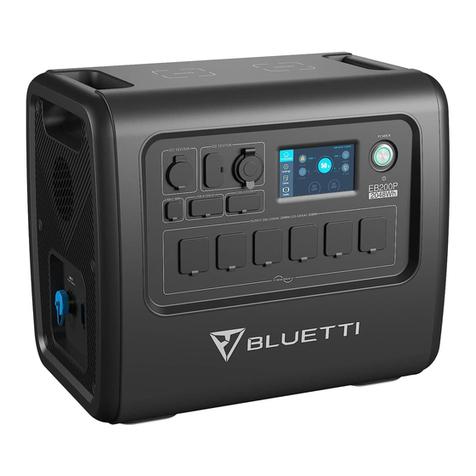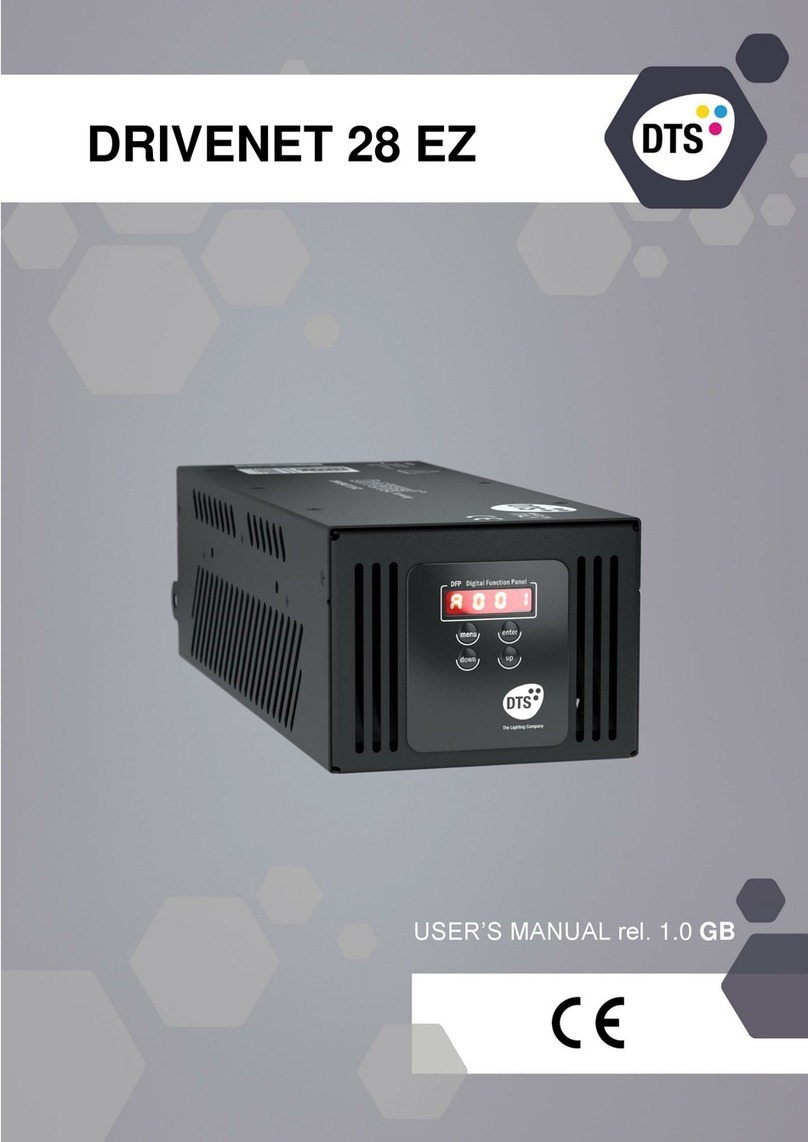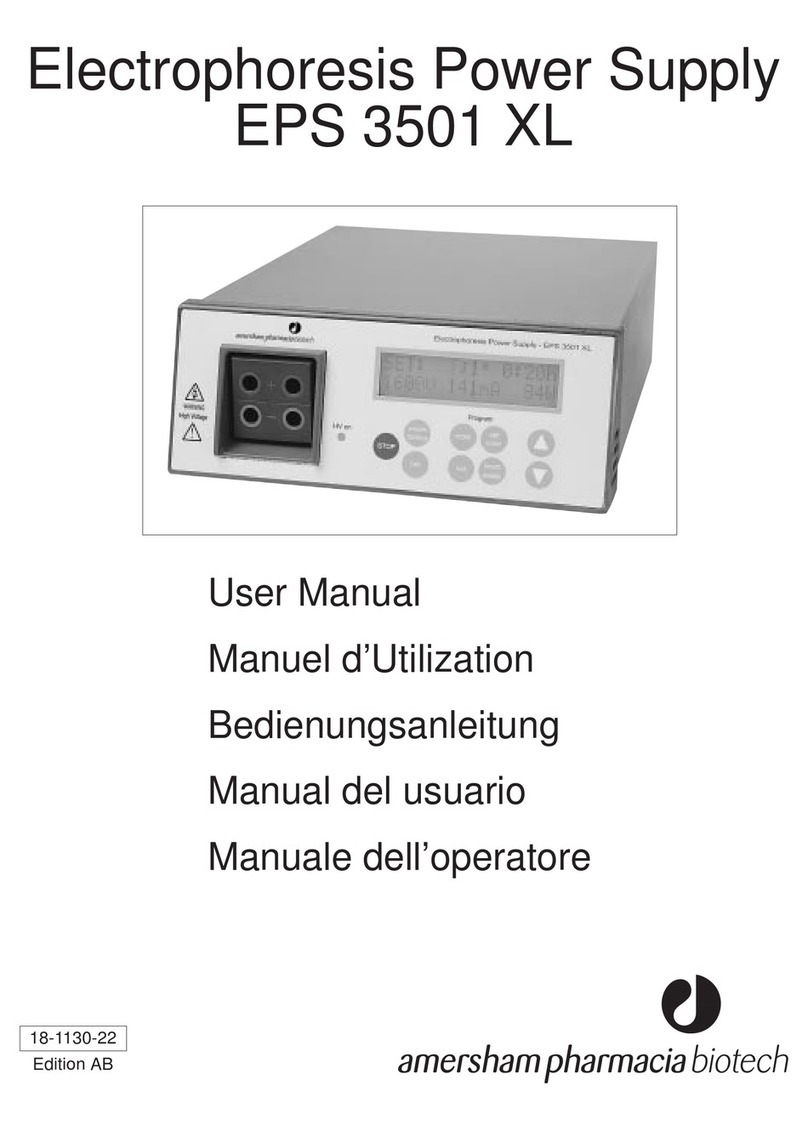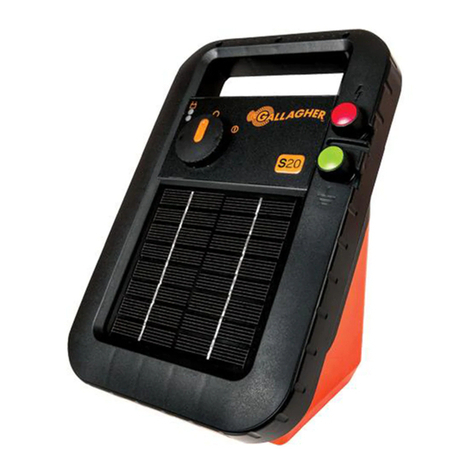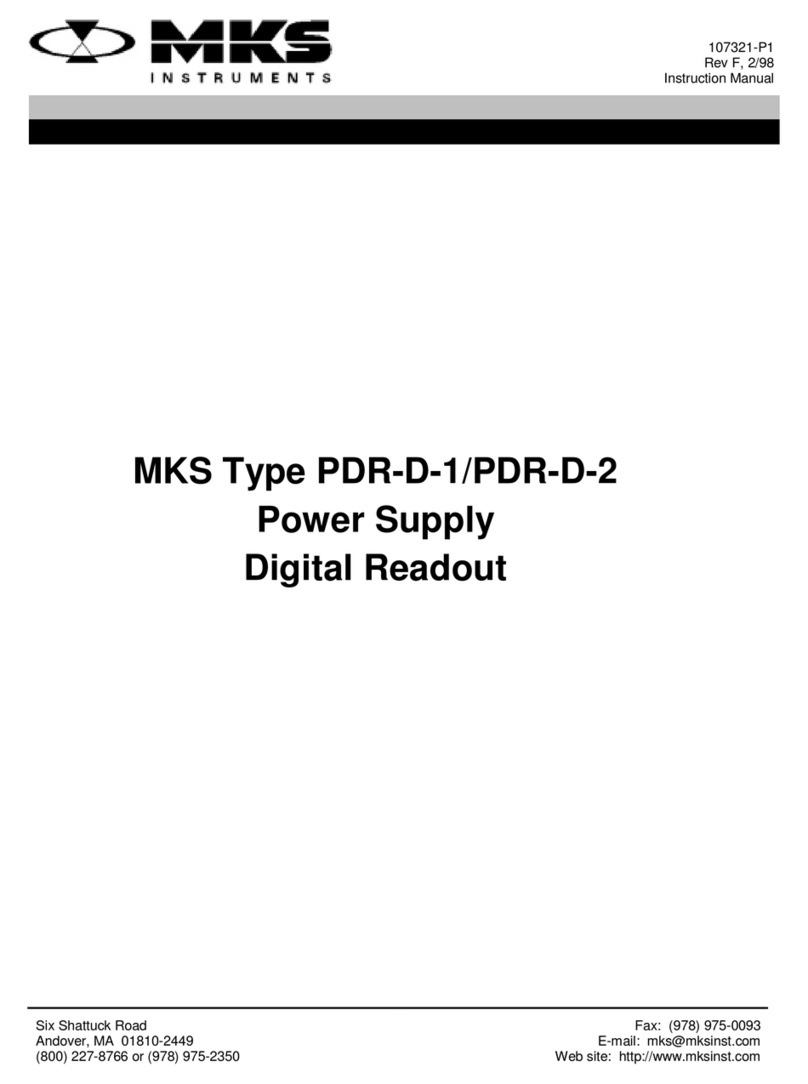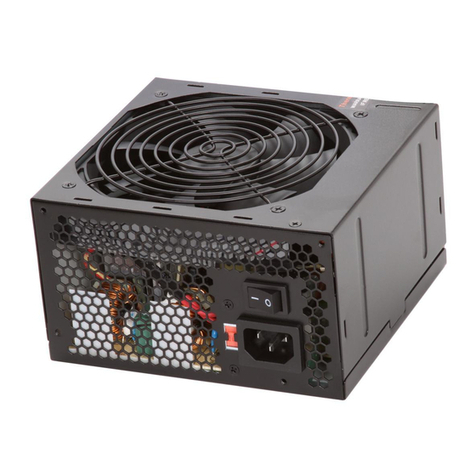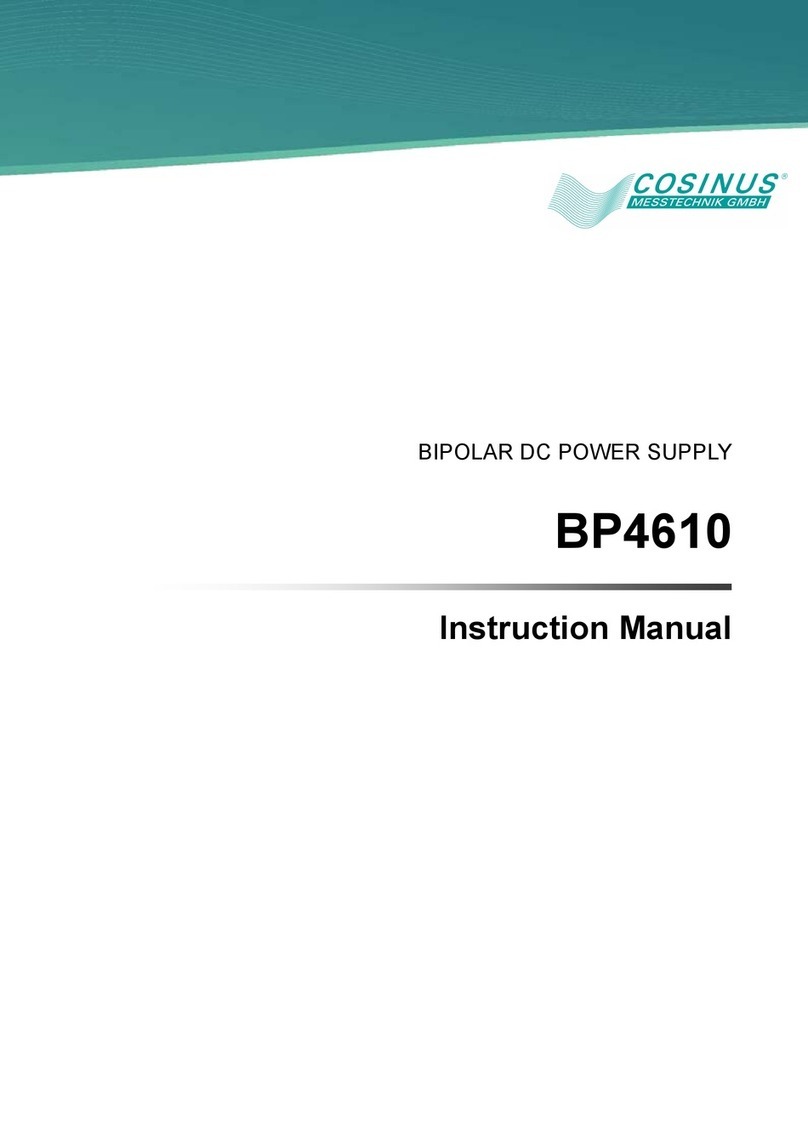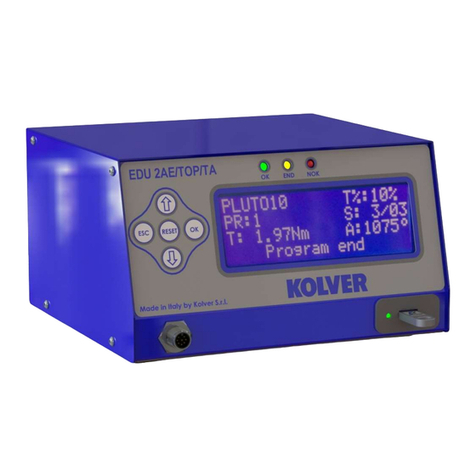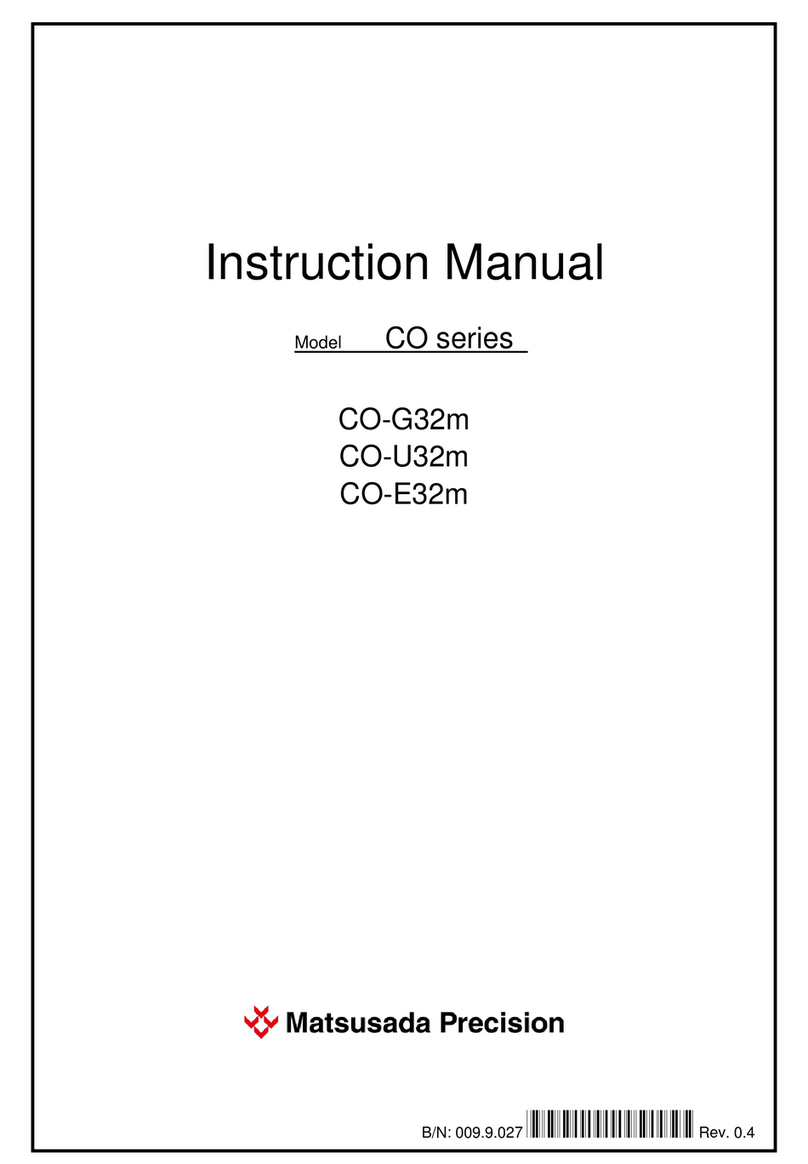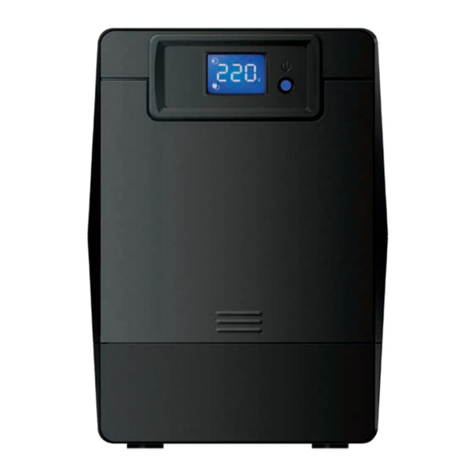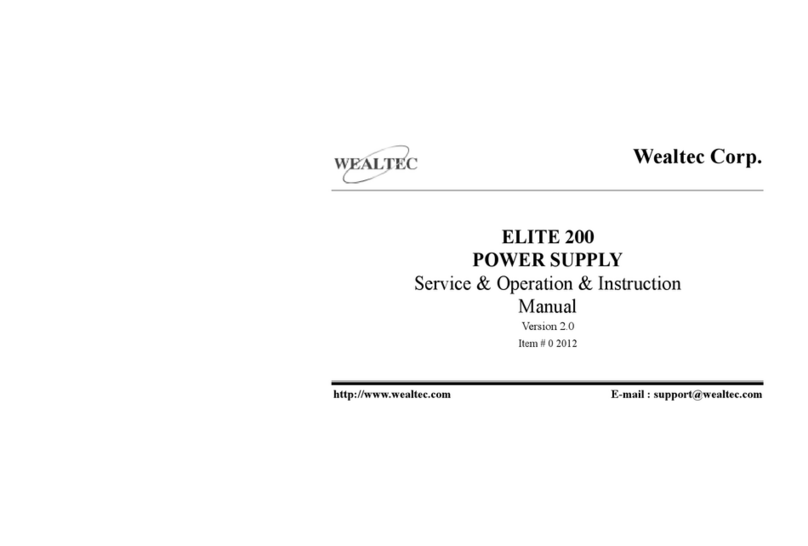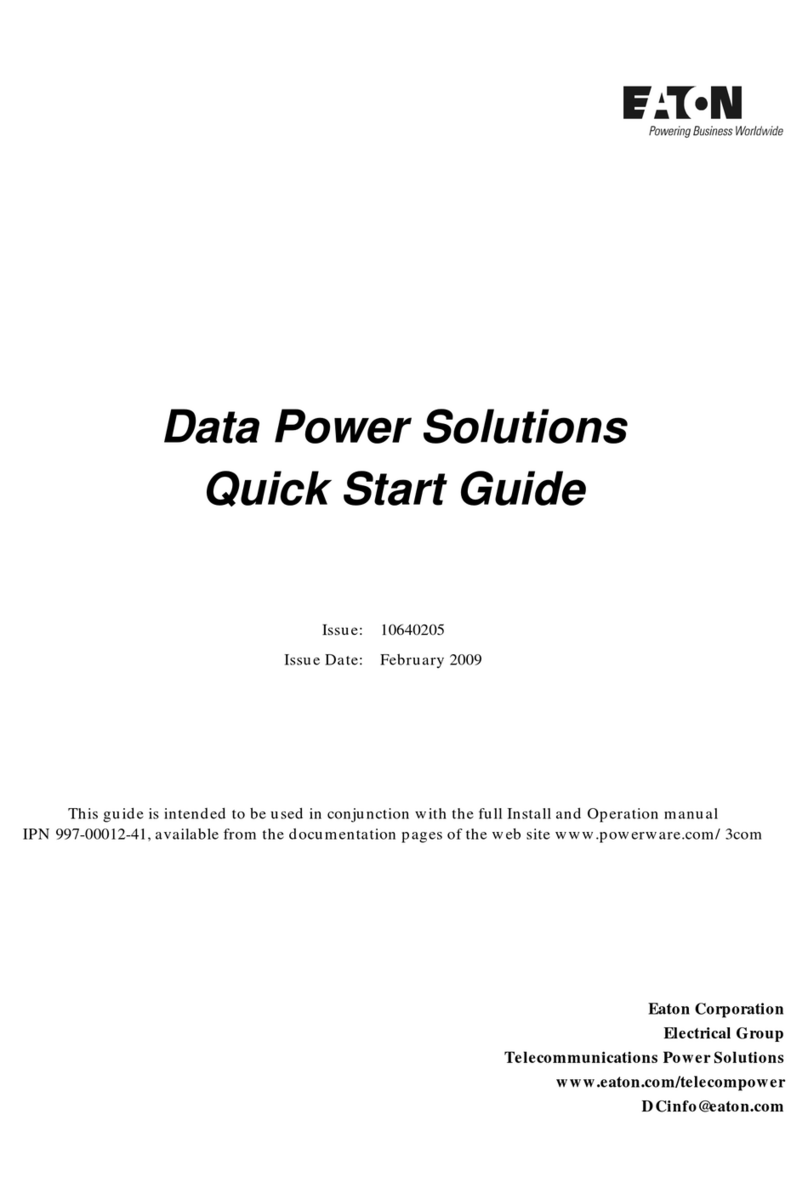Dimensions Unlimited 12X16B3R4T User manual

Dimensions Unlimited 1
ISO 9001:2000 Registered Company
Dimensions Unlimited, Inc.
DC to AC Standby Power Systems
Owners Manual for Models:
12X16B3R4T
12X20B3R4T
12X25B3R4T
12X30B3R4T
12X36B3R4T
Including Options:
R1: LCD Remote Control/Status Panel
with master disconnect
Form: 121954D
April 2006

Dimensions Unlimited 2
Table of Contents:
Section Description Page
1 Safety Instructions ..…………………………………………………..… 3
1.1 Warning and Danger Symbols ……..……..…………….…….….. 3
1.2 Standby Power System Precautions ……….……………….……… 3
1.3 Battery Precautions …………………….……..………………...…… 3
2 Specifications ……..……………………..…...……………………..…… 4
3 Technical description …..……………………………………………..… 5
3.1 Standby Power Systems …….……….…………………...……....… 5
3.1.1 Inverter Power Mode …………………………………….…. 5
3.1.2 External Power Mode ….……………………………………. 5
3.2 Features ………………………………………………………………….…. 6
3.2.1 Battery Charger – “B3” …………….…….…………………. 6
3.2.2 LCD Remote Control/Status Panel – “R4” ……………... 6
3.2.3 Transfer Switch – “T” …………..…………………..……… 6
3.3 Options 6
3.3.1 LCD Remote Control/status Panel – “R1” Option 6
4 SPS Physical Description ..……….……………………………………. 7
4.1 SPS Module ………….…………………..……………….………………. 7
4.2 LCD Remote Control/Status Panel ….………………………...…. 8
5 Installation ..………………………….…………………………………… 9
5.1 Tools Needed for Installation ..…………………………….………. 9
5.2 System Components ..………………………………….……………... 9
5.3 Mounting the SPS ….…………………………………………………… 9
5.3.1 Chassis Bonding Lug .……………………………………..… 9
5.3.2 Temperature Compensation Sense Probe …………….. 9
5.3.3 Connecting the LCD Remote Control/Status Panel . 9
6 SPS Wiring …………..……….……………………………………………. 11
6.1 DC Wiring …………………………………………………………….……. 11
6.1.1 Inverter Cable .…………………….………………………….. 11
6.1.2 Charge Cable ..……………………….……..……………..…. 11
6.1.3 Connecting the DC Wires ………..…………………..……. 12
6.1.4 Deep Cycle Batteries .…………………………………..…… 12
6.2 AC Wiring …………………………………………….…………….…..…. 13
6.2.1 AC Output …..…………………………….……………………. 13
6.2.2 AC Input ……..…………………………….……..……………. 13
6.3 DC Wiring Diagram ..…………………………………………………… 14
6.4 AC Wiring Diagram ….………………………….……………………… 15
7 Operation and Troubleshooting ..………………………………....…. 16
7.1 Operation …..……………………………………………………………… 16
7.1.1 Setting the Battery Size and Type ..….…………….….. 16
7.1.2 Turning the SPS On ………….…………..……………..….. 16
7.1.3 Battery Charger Draw – Set Input ……………………... 17
7.1.4 LCD Remote Control/Status Panel Display Messages 17
7.2 Troubleshooting ……………..………………..………………..….….. 19
7.2.1 Troubleshooting Chart ……….….…….……………….….. 19
7.2.2 System Flow Chart …………………………………………… 21
8 Warranty ………………………………………..…………………….…… 23

Dimensions Unlimited 3
Safety Instructions
Important: Read this manual before installation, it contains important safety,
installation, and operating instructions. Save this manual and keep it in a safe place.
1.1 Warning and Danger Symbols:
To reduce the risk of electrical shock and to ensure the safe operation of your
Dimensions power inverter, the following symbols are used throughout the manual.
ATTENTION:
Important operating instructions.
Follow them closely.
DANGER:
Risk of personal harm and/or
electrocution exists in this area.
Use extreme caution.
SAFETY CERTIFICATION:
This is a UL and CUL Certified product that complies with all the safety
standards required in the USA and Canada for land vehicle inverters.
1.2 Standby Power System Precautions:
• Standby Power Systems produce hazardous voltages. To avoid risk of harm or fire,
the unit must be properly installed.
• There are no user serviceable parts inside, do not remove the cover.
• The Standby Power Systems should not be mounted in a location that may be
exposed to rain or spray.
• The Standby Power Systems should not be installed in a zero clearance enclosure.
• Damage to the Standby Power Systems will occur if correct polarity is not observed
when installing the DC input cables.
• Damage to the Standby Power Systems will occur if an external AC power source is
applied to the inverter’s AC hardwire output.
• The Standby Power Systems contains a circuit breaker and capacitor that may
produce a spark. Do not mount in a confined battery or gas compartment.
• Be sure the Standby Power Systems is turned OFF during installation.
1.3 Battery Precautions:
• Working in the vicinity of lead-acid batteries is dangerous. There is a risk of acid
exposure.
• Batteries generate explosive gases during operation.
• There is risk of high current discharge from shorting a battery that can cause fire
and explosion. Use insulated tools during installation.
• Remove all rings, watches, jewelry or other conductive items before working near
the batteries.
• Inspect the batteries once a year for cracks, leaks or swelling.
• Dispose of the batteries according to local regulations. Do not incinerate batteries;
risk of explosion exists.

Dimensions Unlimited 4
Specifications
Millennium Series
Standby Power Systems
12X16B3R4T, 12X20B3R4T,
12X25B3R4T, 12X30B3R4T,
12X36B3R4T
Environmentally Friendly,
Quiet, Reliable, AC Power
MODEL NUMBER 12X16 12X20 12X25 12X30 12X36
Output Power (Watts Cont.) 1,600 2,000 2,500 3,000 3,600
Output Current (Amps AC) Up to 13 Up to 17 Up to 21 Up to 25 Up to 30
Peak Output (Amps AC) 55 70 80 90 90
Output Rating: (hp) 1/3 ½ ¾ 1 1½
Input Current (Amps DC) Up to 160 Up to 200 Up to 250 Up to 300 Up to 360
Weight (lbs.) 40 44 49 53 58
Dimensions LxWxH (Inches) 15¾ x 11½ x 7¾
BATTERY CHARGER “B3” 3 step charger with automatic conditioning; Temperature compensated
output voltage; selectable between wet and sealed lead acid batteries;
selectable between small and large battery banks
Output Current (Amps DC) 75 100 130 140 140
Input Current (Amps AC) Up to 16 Up to 21 Up to 26 Up to 28 Up to 28
TRANSFER RELAY “T” Fail-safe shore power Transfer Relay
Current Rating (Amps AC) 30
Transfer Time (milliseconds) Less than 16 typical
Output Voltage (VAC) 120 RMS ±5%
Output Frequency: 60 Hz ± 0.05%
Output Waveform: Quasi-sine wave, with waveform stabilizer
Input Voltage: (VDC) 11 to 14
Operating Temperature: -20° to 40° C (0° to 104° F)
Efficiency: Up to 93%
Other Design Features:
• Thermally controlled cooling fan.
• Enclosed AC and DC cable connections with strain relief.
• Built-in battery charger “B3” and transfer relay “T”
Remote Control Panel – “R4”:
• LCD Display – Blue background, 16 white characters by
two lines with user-friendly messages.
• Dimensions – W x H x D: 5.75” x 3.75” x 1.25”
• Optional DC master disconnect switch control wire with
assembly panel 141315-1 only
Unit Protection:
• Automatic electronic short
circuit/overload protection
• Automatic high temperature
shutdown
• Output circuit breakers
Battery Protection:
• Automatic low battery shutdown
at 10.5 VDC (with in-rush delay)
• Usage: Any 120 VAC, 60 Hz single-phase products within the standby power system’s rating that does
not require a pure sine waveform.

Dimensions Unlimited 5
Technical Description
3.1 Standby Power System:
A Standby Power System is a DC to AC power inverter with a battery charger “B3” and
an automatic fast transfer switch “T”.
Note: In this manual, we will use the acronym SPS when referring to a Standby Power
System.
A remote LCD control/status panel controls the SPS and provides system status by
displaying user-friendly screen messages.
The system has two operational modes: Inverter power mode and external power mode.
3.1.1 Inverter Power Mode: The SPS converts DC power from batteries to usable
120 VAC, 60 Hz power. The direct current (DC) that enters the SPS is filtered by a large
input capacitor and switched “On” and “Off” by the Metal Oxide Silicon Field Effect
Transistors (MOSFET) at a rate of 60 cycles per second, and directed into the
transformer which steps the voltage up to 120 volts. The unit has a Digital System
Processor (DSP) to control the output voltage and frequency as the DC input voltage
and/or output load varies. The signal output waveform shape is not sinusoidal; it has a
total harmonic distortion of 31% and a maximum single harmonic distortion of 25%.
3.1.2 External Power Mode: 120 VAC, 60 Hz external power can be applied
directly to the SPS by hardwire connections to the AC input wire leads provided in the
field-wiring compartment. When external power is present, the internal transfer switch
cannot be defeated; it automatically turns the DC to AC inverter OFF and activates the
three-step battery charger. At this time the loads attached to the SPS output will
operate directly from the external power line even if the SPS was turned OFF manually.
The internal transfer relay automatically switches the SPS back to “inverter power” mode
in the absence of external power whenever the SPS was previously set to ON.

Dimensions Unlimited 6
3.2 Features
3.2.1 Battery Charger – “B3” Option: External power 120 VAC, 60 Hz is applied
as explained in section 3.1.2 The internal transfer switch automatically turns the DC to
AC inverter OFF and turns the three-step built-in battery charger ON. The battery
charger cannot be defeated at this time and will engage even if the inverter has been
set OFF manually. SPSs with the three-step battery charger feature require the transfer
switch “T” option to operate.
The 3-steps of the charging process are as follows:
Bulk mode: Charging current is passed through the batteries until a factory set
acceptance voltage limit is reached. The charger’s maximum output and/or the state of
charge of the batteries determine the amount of current.
Acceptance mode: Charging continues with the voltage held at the accept voltage
until current flow decreases to the factory set end value or the factory set acceptance
mode time limit is reached.
Float mode: Battery voltage is held at a factory set value, which will neither charge nor
discharge the batteries.
Condition mode occurs every 10th charge cycle between Acceptance mode and Float
mode to ensure full restoration of active materials in all the plates of the battery cells.
The SPS has an automatic power sharing feature that automatically decreases the
battery charger output so that the total AC input current draw by the SPS for both the
AC loads and the battery charger does not exceed 30 amps AC. If the loads exceed 30
amps the charger will be at zero amp draw and the AC input circuit breaker will trip. The
battery charger draw will automatically increase when the external loads are reduced if
the batteries will accept more current.
3.2.2 LCD Remote Control/Status Panel – “R4”: The SPS can only be
controlled by the remote control/status panel which is connected to the SPS module by
a gray flat 8-conductor wire. There are three push buttons and a red LED that when lit
indicates a trouble condition. The remote control/status panel provides system status
through a 16-character by 2 line LCD display.
3.2.3 Transfer Switch – “T” Option: The transfer switch automatically switches
between “Inverter mode” and “External power mode” depending of the external power
line availability. External power 120 VAC, 60 Hz can be applied directly to the SPS AC
input as explained in section 3.1.2.
3.3 Options
3.2.1 LCD Remote Control/Status Panel – “R1” Option: This option is the
same as “R4” except the LCD Remote Control/Status Panel – “R1” part number 141315-
1 includes a 1-foot control wire extending from the back for DC master disconnect if
available in the coach.

Dimensions Unlimited 7
SPS Physical Description
4.1 SPS Module
FIGURE 1: SPS physical description
Item # Description Function
1 Output Breaker – 30A Trips to protect the SPS from hardwire AC output
short circuit or overload.
2 Field Wiring Compartment Cover Remove the faceplate to access the AC Input/Output
lead wires and DC field-wiring compartment.
3 Remote Control Panel Connector Connects to the LCD Remote Control/Status Panel
4 Temperature Compensation Sensor
Connector
Connects to the remote temperature sense probe.
5 Bonding Lug Connects to the ground system.
6 DC input entry opening Allows the DC cables to reach the DC input terminal
connector.
7 Battery Capacity Selector Switch Sets the correct battery type and the capacity of the
battery bank for proper charging.
1
2
3
4
5
6
7

Dimensions Unlimited 8
4.2 LCD Remote Control/Status Panel
FIGURE 2: LCD Remote Control/Status Panel
1 Read Display: The red LED indicator will light when the SPS is in a warning
condition.
2 Display – On/Off: Turns the LCD screen backlighting ON or OFF.
3 Inverter & Reset – On/Off: Turns the SPS ON or OFF and resets any error
message.
4 Charger draw – Set Input: This button limits the input AC current for the battery
charger.
5 LCD Display: Shows system status, battery voltage, and electrical current in both
inverter and external power mode as well as shut down conditions.
6 DC Master Disconnect switch control wire – “R1” Option: Available with the
LCD Remote Control/Status Panel – R1 assembly 141315-1. A 1-foot, red wire
extends from the back of the panel and connects to the “DC master disconnect
switch” which is found in most recreational vehicles.
7 Flat cable connector jack: Connects the 8-conductor flat gray signal cable coming
from the SPS.
INVERT 1250 WATT
BATT 12.4 VOLTS
1
2 3
4
7
6 141315-1
Front view
Rear view
5

Dimensions Unlimited 9
Installation
5.1 Tools for Installation:
Tools required for installation: 3/8” Allen Wrench and socket wrench, connectors (butt
type and insulated), drill, Crimpers (for insulated and non-insulated connectors), #2
Phillips screwdriver, wire cutters, wire strippers, cable ties, tape measure.
5.2 System Components:
Picture Model and Description Qty.
12X16B3R4T, 12X20B3R4T, 12X25B3R4T, 12X30B3R4T,
12X36B3R4T
1
LCD Remote Control/Status Panel assembly 141255-2 or
141315-1
1
LCD Remote Control/Status Panel flat cable, 611446-XX; XX:
Length of the cable in feet.
1
Temp. Comp. Cable 611440-XX; XX: Length of the cable in feet.
1
5.3 Mounting the SPS:
The SPS mounting location should provide adequate ventilation and clearance
to maintain room temperature during operation. At least 1/2 inch of clearance
is required on all sides.
• Locate a suitable, secure vertical or horizontal mounting surface as close to the
batteries as possible without being in the same airtight compartment.
• If mounting the SPS on a vertical surface, it is recommended that the front panel be
pointing down whenever possible.
• Locate the mounting holes on the chassis flanges and fasten them using ¼ inch
diameter screws to secure the inverter. See figure 3, page 10.
5.3.1 Chassis Bonding Lug: Connect the bonding lug located at the right side of
the SPS chassis to the earth grounding system using an 8-gauge copper wire.
5.3.2 Temperature Compensated Wire Sense: Connect the two-conductor
gray wire to the negative post of the battery bank. Failure to connect the remote
temperature sense probe correctly will result in high output voltage that will cause
severe damage and exploding batteries and fire.
5.3.3 Connecting the LCD Remote Control/Status Panel: Mount the panel
last in a convenient, visible and accessible location. Connect the flat cable connector
extending from the SPS module to the receptacle at the rear of the panel. 141315-1
assembly panels must connect the red wire extending from the back of the panel to the
output of the DC master disconnect switch. See wiring connections on figure 6, page 14.

Dimensions Unlimited 10
Figure 3: SPS footprint
• All dimensions are in inches
• Heatsinks are available with the “U” option only or any 3600-watt inverter.
• Front of the unit is to the right
Heatsinks
Figure 4: LCD Control panel footprint
–
Assemblies 141255-2 or 141315-1
5.25
3.25
1.22
0.50
4.75
3.75
• All dimensions are in inches
0.50
0.500.50

Dimensions Unlimited 11
SPS Wiring:
6.1 DC Wiring:
1 It is recommended in all cases to use stranded copper wires.
2 Use SGX cross-linked polyurethane insulation type that complies with the high
temperature insulation requirements (125°C.) of SAE J-1127 and vehicle
manufacturer requirements.
3 Wire gauge recommendations are minimum. For higher temperature applications
inside engine spaces or large motor loads and other applications with high surge
currents use wire gauge 1 to 2 sizes larger than shown on table I.
4 Keep the wire runs between battery and SPS as short as possible.
5 Use Bussmann fuse type ANN-XXX and fuseblock # 3576 where XXX is the size of
the fuse.
6.1.1 Inverter Cable: This is the cable that runs from the SPS to the batteries.
Estimate the “inverter cable” length and locate your SPS model on table I, cross-
reference the wire gauge and fuse size.
Table I: Wire and Fusing Guide for 12VDC systems at 5% Voltage Drop at Full Output
Figure 5: Inverter cable assembly
6.1.2 Charge Cable: This is the cable that runs from the batteries to vehicle
alternator or OEM engine battery. Use 2-gauge cables and 250A fuse for small OEM
alternators and 1/0-gauge and 350A for heavy-duty alternators.
SPS to battery estimated cable length in feet
SPS
Model
Full Load
(Amps DC) 1’ – 10’ 11’ – 15’ 16’ – 20’
12X16B3R4T 160 2-gauge, 250A fuse 1-gauge, 300A fuse 1/0-gauge, 350A fuse
12X20B3R4T 200 2-gauge, 250A fuse 1/0-gauge, 350A fuse 2/0-gauge, 400A fuse
12X25B3R4T 250 1/0-gauge, 350A fuse 2/0-gauge, 400A fuse 3/0-gauge, 500A fuse
12X30B3R4T 300 2/0-gauge, 400A fuse 3/0-gauge, 500A fuse 4/0-gauge, 600A fuse
12X36B3R4T 360 4/0-gauge, 600A fuse 4/0-gauge, 600A fuse Not Recommended
To inverter
DC input
To
batteries Fuse-holde
r
Black wire (-)
A
20 feet maximum
B
18” max.
Red wire (+)
A
B
Fuse B terminal: 5/16” Ring
A
terminal:
3/8” Ring

Dimensions Unlimited 12
6.1.3 Connecting the DC cables
Damage to the SPS not covered under warranty will occur if correct polarity is
not observed when installing the DC input cables.
• Refer to Figure 6: DC wiring diagram.
• Open the SPS field-wiring compartment to access the DC input lugs.
• Unscrew the DC input lug POS (+) and NEG (-) 3/8” Allen screws.
• Remove the fuse from the fuseholder for cable installation.
• Remove 1 inch of insulation from the un-terminated ends of the red and black
cables.
• Insert the stripped end of the red wire into the DC input lug labeled POS (+) and the
stripped end of the black wire into the DC input lug labeled NEG (-). Tighten the
3/8” Allen screws to 23 Ft. Lbs.
• Tighten the cover DC cable strain relief screws to 1 Ft. Lb.
• Connect the end of the short red cable to a POS (+) battery post.
• Connect the terminated end of the black cable (neg. return cable) directly to a
battery NEG (-) post (DO NOT connect to the chassis).
• Install the in-line fuse in the fuseholder that is within 18” of the positive post of the
battery bank (a one-time spark will occur when this final DC connection is made). To
determine the fuse size, refer to section 6.1.1.
6.1.3 Deep Cycle Batteries:
Do not use vehicle-starting batteries; deep discharge cycles typical with
inverter applications can shorten the life of this type of batteries.
• Install at least one auxiliary deep cycle battery to feed the SPS directly.
• Depending on the application running time more batteries could be added if
necessary. The vehicle alternator will recharge the batteries.
• It is recommended to mount the battery bank close to the SPS.
• The maximum recommended distance between the SPS and the battery bank is 20
feet.
• The battery compartment must be vapor-tight to the interior of the vehicle and
vented directly to the exterior.
• Install several vent-plugs within one inch of the top of the battery compartment to
allow for ventilation. Install a ventilation assembly as needed.
• Allow space around the battery and especially above the battery for inspection, and
maintenance purposes.
• The battery should not be able to move more than 1 inch in any direction.
Install the LCD Remote Control/Status Panel last, after the batteries, DC wires
and AC wires been installed.

Dimensions Unlimited 13
6.2 AC Wiring:
Remove the SPS field-wiring compartment cover plate to access the 120VAC, 60Hz input
and output hardwire leads and follow the color code connections: Hot - Black wire,
Neutral - White wire, Ground - Green wire.
6.2.1 AC Output: The 120 VAC, 60 Hz current produced by the SPS is presented
behind the wiring compartment panel with direct hardwire leads.
• The hardwire leads are not GFCI protected and must require the installation of
remote GFCI outlets. The GFCI outlets model recommended is Hubbell # GFR
5352XX (20A) or GFR 5252XX (15A).
Do not connect another source of AC power directly to the output of the SPS.
This will result in damage to the SPS that is not covered under warranty.
6.2.2 AC Input: The transfer switch “T” has AC input hardwire leads which can be
connected to an external power line 120VAC, 60Hz outlet. The cable clamp strain relief
should be used to secure the field wires. The input circuit should have a maximum 30
amps circuit protection from the distribution panel. If the input cable to the unit is 14-
gauge, then a 15 amps circuit protection is required.
Install the LCD Remote Control/Status Panel last, after the batteries, DC wires
and AC wires been installed.

Dimensions Unlimited 14
6.3 DC Wiring Diagram
Figure 6: DC wiring diagram
- +
Aux.
12 Volts
Battery
Fuse
Charge Cable
Black (-)
Vehicle Alternator
OEM
12 Volts
Batter
y
Fuse
Fuse
AC Output AC Input
Under the hood
Remote Temp. Sense
Red (+)
Black (-)
Charge Cable
Red (+)
•
Connect the charging cables directly to th
e
vehicle alternator whenever possible or t
o
the OEM starting engine battery.
2-pin
Connector
Remote Control Panel
141255-2 or 141315-1
Flat Cable
Adapter
DC master disconnect switch
(customer supplied)
This feature (red wire) is available with
the 141315-1 assembly panel only
Fuse

Dimensions Unlimited 15
6.4 AC Wiring Diagram
Figure 7: AC wiring diagram
30
Output
Breaker
AC Output AC Input
30A
20A
Black wire – Hot
White wire – Neutral
Green wire - Ground
Black White Green
Wire Wire Wire
H
o
t Neutral Gr
o
und
Install GFCI outlets Hubbell # GFR 5352X
X
(20A) or Hubbell # GFR 5252XX (15A)
120VAC 60Hz Output
AC Input
Fuse (maximum)
Remote GFCI outlet
Fuse

Dimensions Unlimited 16
Operation and Troubleshooting
7.1 Operation
The battery voltage must be higher than 9 volts for the SPS to operate.
7.1.1 Setting the Battery Size and Type: The battery selector switch located at
the right side of the chassis must be set according to the type and size of the battery
bank the SPS is connected to as shown in table II below.
TABLE II: BATTERY SELECTOR SWITCH POSITION
DEEP CYCLE BATTERY TYPE
BATTERY BANK SIZE
(Amp-Hour) SEALED LEAD ACID WET LEAD ACID
More than 400 A C
Less than 400 B D
TABLE III: BATTERY CHARGER VOLTAGES
WET CELL BATTERIES SEALED BATERIES
BATTERY
TEMPERATURE
°F °C
ACCEPT
(Volts)
FLOAT
(Volts)
CONDITIONING
(Volts)
ACCEPT
(Volts)
FLOAT
(Volts)
CONDITIONING
(Volts)
78 25 14.6 13.2 14.9 to 15 max. 14.2 13.2 14.4 to 15 max.
TABLE IV: BATTERY CHARGER TIME PERIODS
WET CELL TYPE BATTERIES SEALED TYPE BATTERIES
BATTERY BANK SIZE
(Amp-Hour) BULK
(max.)
ACCEPT
(max.)
CONDITIONING
(max.)
BULK
(max.)
ACCEPT
(max.)
CONDITIONING
(max.)
Less than 400 6-hrs. 2-hrs. 3-hrs. 6-hrs. 2-hrs. 3-hrs.
Greater than 400 8-hrs. 3-hrs. 6-hrs. 8-hrs. 3-hrs. 4-hrs.
If the bulk mode times-out the charging process will go to the float mode
immediately bypassing the acceptance mode.
7.1.2 Turning the SPS ON: After correct installation, the built-in transfer relay
automatically switches the SPS to “external power” mode activating the battery charger
any time a proper external AC voltage source is present. Setting the charger current
draw to zero with the LCD Remote Control/Status Panel can turn off the battery charger.
See figure 2, item (4) page 8.
The “inverter mode” can only be activated when there is no proper voltage external AC
power source. The inverter is turned ON or OFF by the LCD Remote Control/Status
Panel. See figure 2, item (3) page 8. The inverter can be left ON and the SPS will
automatically cycle back and forth between the battery charger and inverter. However,
there is a one to two amps draw on the batteries when the inverter is ON and there are
no AC loads which could discharge the battery(s).

Dimensions Unlimited 17
Pressing any button enables the panel. This first button activation shows the status. To
change, press the button again.
7.1.3 Battery Charger Draw - Set Input: The SPS automatically limits the
battery charger AC current draw to a maximum of 25 Amps and the SPS also has the
automatic power share feature (see section 2.3.3 page 12). The user may want to
further limit the charger’s maximum AC current draw because of a limited capacity
“shore” power source (ie: 15 Amps rather than 30 or 50 Amps).
Decrease the input AC charge current limit in increments of 5 Amps by pressing the
“CHARGER DRAW – SET INPUT” button on the Inverter/Charger Control Panel (see
figure 2, item 4, page 7).
7.1.4 LCD Remote Control/Status Panel Display Messages:
MESSAGE MESSAGE EXPLANATION
a)
This indicates that the SPS is in “inverter mode”. The panel displays the
wattage of the load and the voltage of the batteries. The “inverter mode”
will activate only if there is no external AC power connected to the SPS.
b)
This indicates that the battery charger is OFF because there is no external AC
power connected to the SPS. The inverter is also turned OFF.
c)
When external AC power is connected to the SPS the three-stage battery
charger may be activated. This indicates that the charge current limit has
been set to 0 amps (see section 7.1.3 on this page). The battery charger is
not active.
d)
This indicates that the three-stage charger is in the bulk mode. The bulk
mode is the first stage of the battery charging process. The display also
indicates the battery voltage and the amount of DC charge current flowing
into the batteries. See tables II & III on page 15 for more information.
e)
This indicates that the charger is in the acceptance mode, the second stage
of the battery charging process. The display also indicates the battery voltage
and the amount of DC charge current flowing into the batteries. See tables II
& III on page 15 for more information.
f)
This indicates that the charger is in the float mode, the third stage of the
battery charging process. The display also indicates the battery voltage and
the amount of DC charge current flowing into the batteries. See tables II &
III on page 15 for more information.
INVERTER xxxx WATT
BATT xx.x VOLTs
CHGR-OFF NO INPT
INVERTER-OFF
CHGR-OFF
0 AMP LIMIT SET
CHGR-BULK MODE
xx.x VOLT, xxx AMP
CHGR-ACCEPT MODE
xx.x VOLT, xxx AMP
CHGR-FLOAT MODE
xx.x VOLT
,
xxx AMP

Dimensions Unlimited 18
g)
This indicates that the charger is in the conditioning mode. Battery
conditioning is automatically performed every 10th complete charge cycles.
The display also indicates the battery voltage and the amount of DC charge
current flowing into the batteries. See tables II & III on page 15 for more
information.
h)
This message is displayed when you press the “
Inverter & Reset – On/Off”
button while the SPS is in the external power mode and the battery charger
is activated. It indicates that the inverter is OFF and will not automatically
turn ON when external power is removed. Pressing the button again will
result in message (j) below. This message will be displayed for ten seconds.
i)
This message is displayed when you press the
“Inverter & Reset – On/Off”
button while the inverter is OFF and there is no external power connected
to the SPS. Pressing this button again will turn the inverter ON and
message (a) will appear.
j)
This message is displayed when you press the “
Inverter & Reset – On/Off”
button while the SPS is in the external power mode and the battery charger
is activated. It indicates that the inverter will automatically turn ON when the
external power is removed. Pressing this button again will result in message
(h) above. This message will be displayed for ten seconds.
k)
This message is displayed when you press the
“Charger Draw – Set Input”
button. It indicates the battery charger input current limit setting. Pressing
this button again will decrease the current limit. This is explained in more
detail in section 7.1.3, page 16. This message will be displayed for ten
seconds.
INVERTER-OFF
PUSH FOR STANDBY
INVERT-STANDBY
OVERRIDE BY CHGR
CHGR- COND MODE
xx.x VOLT
,
xxx AMP
CHGR POWER DRAW
LIMIT xx AMP AC
INVERTER – OFF
PUSH FOR ON

Dimensions Unlimited 19
7.2 Troubleshooting
Call or e-mail Customer Service Department for free consultation during business hours
(central time zone) at: 1-800-553-6418 or 1-651-653-7000; fax: 1-651-653-7600;
e-mail: [email protected]
A TRUE RMS voltmeter is required for accurate AC output voltage readings on
quasi-sine inverters. Other voltmeters that use averaging circuitry will give a
false reading.
• The LCD Remote Control/Status Panel “Read Panel” Red LED warning indicator will
light to indicate a problem either with the inverter or battery charger. Press the
“Panel – On/Off” button to turn the display ON.
• A problem with the transfer relay is indicated when it fails to switch between battery
power “inverter mode” and “external power mode” or when appliances do not
operate when the inverter is in “external power mode”.
• Unplug all loads and connect a 100-watt light bulb to the inverter output. Observe
the LCD Remote Control/Status Panel then check the troubleshooting table.
7.2.1 Troubleshooting Chart
MESSAGE PROBLEM POSSIBLE CAUSE
1
The SPS is not connected to
the batteries or the battery
voltage is below 9 volts DC.
Check the in-line fuses for continuity.
Make sure the DC wires are clean
and tight. Check the DC voltage at
the inverter DC input.
2
Indicates immediately that the
SPS is operating in a low
battery voltage condition.
Fault in the battery wiring, battery
capacity and voltage or the in-line
fuse. This message will automatically
clear or the screen will go to
message 3.
3
Indicates that the inverter has
shut off due to a low battery
condition. Press the
“inverter &
reset – On/Off”
button three
times to turn the inverter back
ON.
The same screen message coming
on again indicates a fault in the
battery wiring, battery capacity and
voltage or the in-line fuse. If the
condition persists, call Dimensions.
4
Indicates immediately that the
SPS is operating in an overload
condition.
SPS output wiring is shorting or
loads that exceed rating. This
message will automatically clear or
the screen will go to message 5.
INVERT LOW BATT
BATT xx.x VOLTS
INVERTER-OFF
LOW BATTERY
INVERTER OVERLOAD
BATT xx.x VOLTS

Dimensions Unlimited 20
5
Indicates that the SPS has shut
off due to an overload
condition.
Remove the short circuit or excessive
load from the output, and then press
the
“inverter & Reset On/Off”
button
three times to turn the inverter back
ON. If the condition persists, call
Dimensions.
6
Indicates that the inverter has
shut off due to high internal
temperature. The unit will
automatically turn back on
when it has cooled to 40°C
(104°F)
Verify that the SPS is not in a closed
compartment and that the fan is not
blocked. High ambient temperatures
combined with a poor ventilation
condition may also contribute to the
shut down of the SPS.
7
Indicates that the inverter has
shut off due to high battery
voltage. The unit will
automatically turn back on
when the condition is
removed.
Check battery wiring or remove
other source of battery charging,
such as the vehicle alternator.
8
Indicates that the charger has
shut off due to high internal
temperature. The unit will
automatically turn back on
when it has cooled to 40°C
(104°F)
Shorted or defective battery. Make
sure that the DC cable connections
are tight and clean and not shorted,
and that the proper wire gauge is
used.
9
Indicates that the charger has
shut off due to high battery
temperature 47°C – 50°C
(117°F - 122°F).
Battery compartment is too hot and
needs to cool down. The charger will
automatically turn back on when it
has cooled down to 40°C (104°F)
10
Indicates that the charger has
shut off due to short or open
temperature compensating
sensor cable.
Temperature compensation sensor
cable needs to be replaced.
11
Indicates that the charger is
operating in a low DC output
voltage condition.
Shorted or defective battery. Make
sure that the DC cable connections
are tight and clean and not shorted,
and that the proper wire gauge is
used.
12
Indicates that the charger is
operating in a high DC output
voltage condition.
There is another source of battery
charging or there is a defective
battery charger. Disconnect and
reconnect the external AC power to
restart the battery charger. If
condition persists, call Dimensions.
INVERTER - OFF
HIGH TEMP
CHARGER - OFF
HIGH TEMP
CHGR-OFF HI-VOLT
RESET OR SERVICE
CHGR-ON LO-VOLT
CHECK BATTERIES
INVERTER - OFF
HIGH BATTERY
INVERTER - OFF
OVERLOAD
CHARGER - OFF
BATT HIGH TEMP
CHARGER - OFF
CHECK BATT PROBE
This manual suits for next models
4
Table of contents
